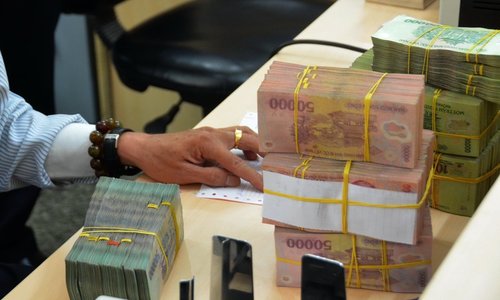Moody’s: positive credit at Vietnamese banks through resolving legacy problem assets
Following in the footsteps of JSC Bank for Foreign Trade of Vietnam and Vietnam Technological and Commercial Joint Stock Bank, Military Commercial Joint Stock Commercial Bank successfully wrote down their Vietnam Asset Management Company (VAMC) bond exposures from their balance sheets in the fourth quarter of 2017.
On January 30, Asia Commercial Bank (ACB) also released its full-year 2017 results, which included a full write-down of bonds issued by VAMC.
As such, Moody’s considered the Vietnamese banking sector to have positive credit, as the disposal of problem assets improves banks’ asset quality and removes the drag on their profitability.
That said, asset quality at most Vietnamese banks stabilized in 2017, helped by healthy macroeconomic conditions. Banks’ profitability also improved as higher-yielding retail loans increased, enabling them to allocate higher provisioning expenses to write off their VAMC bonds ahead of schedule.
Additionally, enhanced legal frameworks, such as Resolution 42, which allows banks and VAMC to rapidly repossess collateral in the event of a borrower defaulting, allowed banks to be more active in managing bad debts. As a result, the total stock of VAMC bonds at rated banks decreased in 2017, the first decline since VAMC began operating.
With this being said, banks are on track towards resolving bad debts, according to Moody’s, although asset risks remain elevated for some banks owing to their large exposure to problematic legacy assets.
Given a favorable macroeconomic environment and the help of new laws such as Resolution 42, other rated banks are also likely to make progress in resolving legacy problem assets over the next 12-18 months. Generally, with improved profitability, banks are now capable of increasing credit provisions and building up buffers against problem assets.
At this pace, more banks are likely to fully write down their VAMC bond holdings by the end of 2018, Moody’s concluded.
The State Bank of Vietnam (SBV) established VAMC in July 2013, with a policy mandate to take over bad debts that had plagued Vietnamese banks in prior years and to manage recovery work. The company takes nonperforming loans (NPLs) off banks’ balance sheets in exchange for special bonds it issues.
VAMC bonds do not pay interest and banks have to effectively recognize losses related to the NPLs as they provision for the VAMC bonds over either 5 or 10 years, so these assets add to credit costs and hurt profitability.
Alternatively, if the VAMC succeeds in recovering a bank’s transferred NPLs, any recovered value can be transferred back to the bank. However, the cumulative NPL recovery rate by VAMC has been low at approximately 20%. Through this mechanism, banks have been able to lower their reported NPL ratios, but they can only truly resolve bad debts through a full write-down or cash recovery of VAMC bonds.


 English
English




